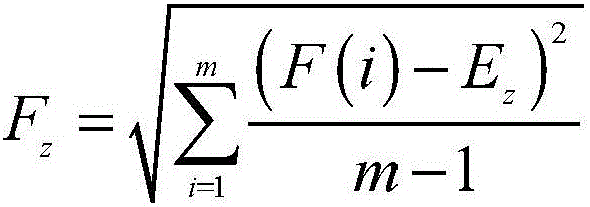Method for measuring humification degree of organic waste and method for applying matured compost by different quality
A technology of organic waste and decomposed compost, applied in material excitation analysis, fluorescence/phosphorescence, etc., can solve the problems of low bioavailability, reduced composting effect, and high bioavailability, avoiding blind application and improving resource utilization Efficiency and operability
- Summary
- Abstract
- Description
- Claims
- Application Information
AI Technical Summary
Problems solved by technology
Method used
Image
Examples
specific Embodiment approach 1
[0031] Specific implementation mode 1: In this implementation mode, the degree of humification of organic waste is determined according to the following steps:
[0032] 1. Extraction and separation of fulvic acid to be composted;
[0033] 2. Using a fluorescence spectrophotometer to obtain the three-dimensional fluorescence data of fulvic acid in Step 1;
[0034] 3. MATLAB programming calculates the integral ratio index of the three-dimensional fluorescence area in the visible area and the ultraviolet area (p 1,n / p 2,n ), parallel factor analysis calculates the C1%, C2%, and C3% values of each component of fulvic acid;
[0035] 4. Use the projection pursuit model to calculate the projection value F, and measure the humification degree of organic waste composting;
[0036] Among them, step 4 first performs the standardization processing of projection projection data:
[0037] For positive indicators:
[0038] y'(i,j)=[y(i,j)-y min (j)] / [y max (j)-y min (j)],
[0039...
specific Embodiment approach 2
[0052] Embodiment 2: The difference between this embodiment and Embodiment 1 is that in step 1, the method recommended by the International Humic Substance Society (IHSS) can be used to extract and separate fulvic acid. Other steps and parameters are the same as those in Embodiment 1.
specific Embodiment approach 3
[0053] Specific implementation mode three: the method for decomposing and composting application in this implementation mode:
[0054] Use the above method to measure the projection value F of fulvic acid in the compost to be used; if the projection value is F>1.25, the decomposed compost is recommended to be used as a contaminated soil remediation agent; if the projection value is F<0.5, the decomposed compost is recommended to be used as a fertilizer; if the projection value F is between 0.5 and 1.25 Between, well-rotted compost is recommended as a degraded soil amendment.
PUM
 Login to View More
Login to View More Abstract
Description
Claims
Application Information
 Login to View More
Login to View More - R&D
- Intellectual Property
- Life Sciences
- Materials
- Tech Scout
- Unparalleled Data Quality
- Higher Quality Content
- 60% Fewer Hallucinations
Browse by: Latest US Patents, China's latest patents, Technical Efficacy Thesaurus, Application Domain, Technology Topic, Popular Technical Reports.
© 2025 PatSnap. All rights reserved.Legal|Privacy policy|Modern Slavery Act Transparency Statement|Sitemap|About US| Contact US: help@patsnap.com



